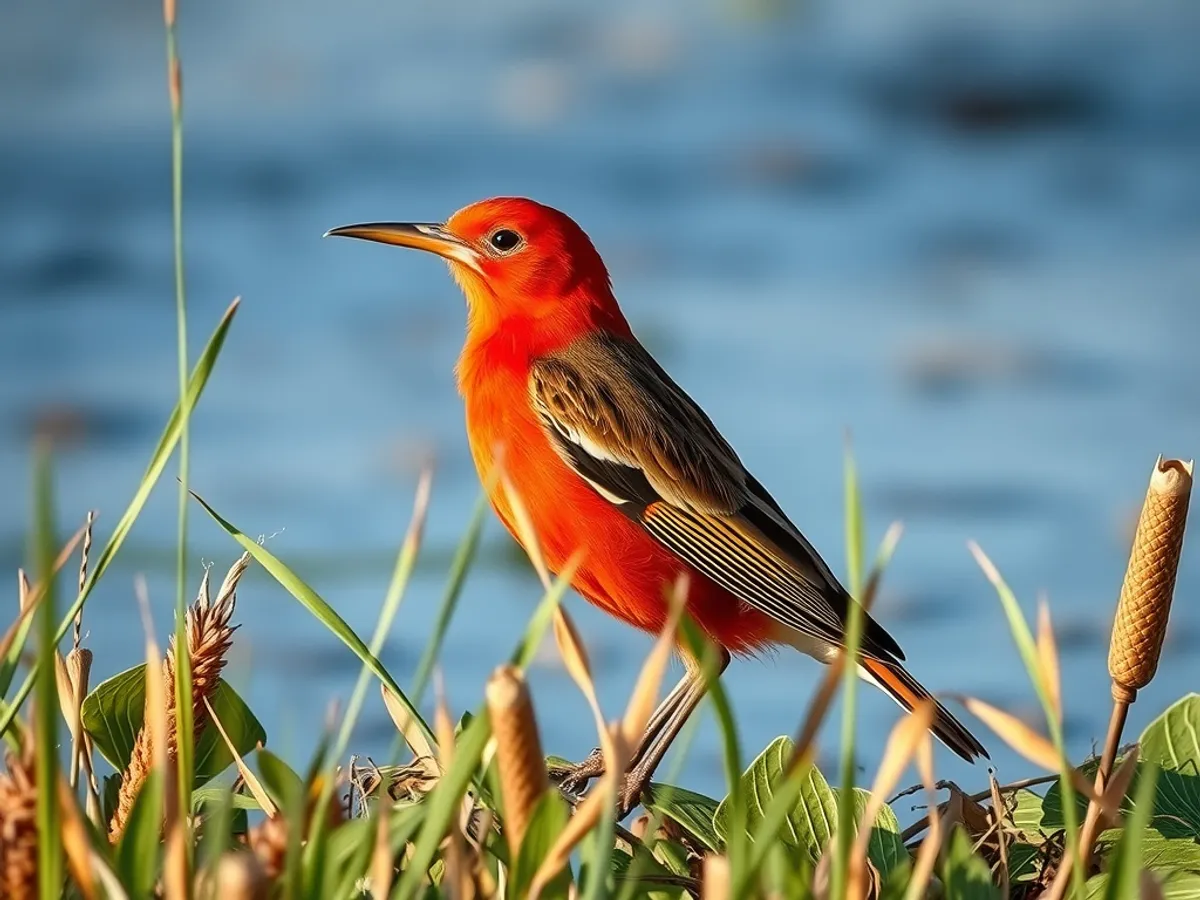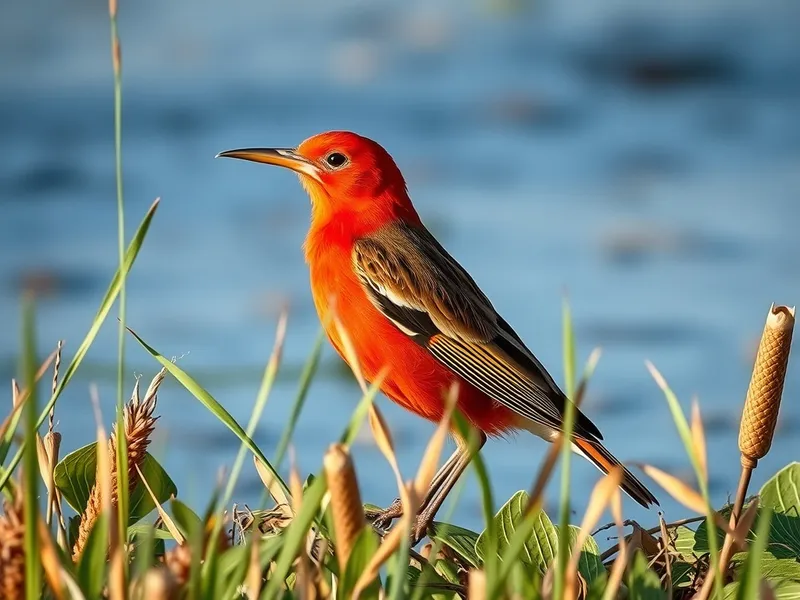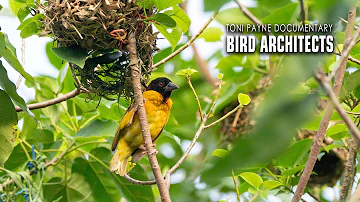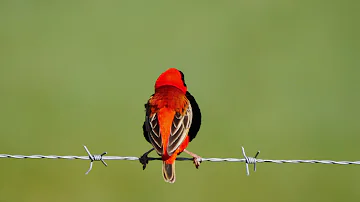
Southern Red Bishop
Euplectes orix

Meet the Southern Red Bishop
The Southern Red Bishop is a strikingly colorful small bird native to sub-Saharan Africa. Males are renowned for their bright red and black plumage during the breeding season, while females and non-breeding males are a more subdued brown with streaking for camouflage. These weaverbirds are commonly found in wetlands, grasslands, and reed beds, where they build intricate nests suspended among dense vegetation. Social and gregarious, Red Bishops often gather in large flocks, especially outside of the breeding season. Their vibrant displays and unique nesting behaviors make them a favorite among birdwatchers.
Classification
Bird
Habitat
Wetlands, reed beds, and grasslands near water
Diet
Omnivore
Lifespan
3-5 years
Conservation
Least Concern
Weight
15-25 g
📖Fascinating Facts
Spectacular Breeding Plumage
Breeding males display brilliant red and black feathers, which are shed after the season for a brown, streaked appearance.
Master Nest Weavers
Southern Red Bishops create complex, woven nests suspended among reeds, often in colonies for added protection.
Habitat Preferences
They thrive in wetland areas with tall grasses or reeds, relying on these environments for both food and nesting.
📋Detailed Description
The Southern Red Bishop (Euplectes orix) is a small, sexually dimorphic passerine bird, typically measuring 10–13 cm in length and weighing 15–22 grams. During the breeding season, males exhibit a striking plumage of vivid scarlet or orange-red on the head, breast, and rump, with contrasting black on the face, throat, and belly; outside of breeding, males molt into a cryptic brown plumage similar to females. Females and non-breeding males are streaked brown and buff, providing camouflage in their grassy habitats. The species has a short, conical bill adapted for seed consumption, but will also take insects, especially during the breeding season. Southern Red Bishops are highly gregarious, forming large flocks that can number in the hundreds, particularly outside the breeding season. Their social structure is complex, with males establishing and defending territories within dense reed beds or grasslands. The species is renowned for its elaborate nest-building: males construct oval, woven nests suspended from reeds or grasses, often building multiple nests to attract females. Their vocalizations include a variety of trills, whistles, and buzzing calls, used in both social communication and territorial defense. The Southern Red Bishop is widely distributed across sub-Saharan Africa, favoring wetlands, marshes, and grasslands near water, but can also adapt to agricultural landscapes. Its adaptability and prolific breeding contribute to its stable population status.
💡 Did you know?
Despite their dazzling breeding colors, Southern Red Bishops can transform their appearance dramatically after the season, blending in almost perfectly with their surroundings.
🔬Research & Sources
Wikipedia Summary
The southern red bishop or red bishop is a small passerine bird belonging to the bishop and widowbird genus Euplectes in the weaver family, the Ploceidae. It is common in wetlands and grassland in Africa south of the Equator. North of the Equator, it is replaced by the northern red bishop or orange bishop which was formerly regarded as a subspecies of this species.
Last Modified: 1/15/2025
🎭Behavior & Social Structure
Southern Red Bishops display pronounced sexual and social behaviors, especially during the breeding season. Males are polygynous and highly territorial, vigorously defending small territories within reed beds by singing and performing conspicuous display flights, fluffing their red plumage to attract females. Feeding primarily occurs in flocks, with birds foraging for seeds of grasses and sedges, but also consuming insects such as caterpillars, beetles, and grasshoppers, especially when feeding young. Foraging is typically done on the ground or among low vegetation. Outside the breeding season, the species forms large, loose flocks that may include other weaver species. Daily routines involve early morning and late afternoon feeding, with midday periods spent resting or preening in cover. Social interactions are frequent, including mutual preening and communal roosting, which provides protection from predators.
👶Reproduction & Life Cycle
Breeding is closely tied to the rainy season, which varies regionally but generally occurs from October to March in southern Africa. Males build several intricate, oval-shaped nests from strips of grass and reeds, suspended from vertical stems above water or in dense vegetation. Females select a mate based on nest quality and male displays, and may mate with multiple males. Clutch size is typically 2–4 eggs, which are pale blue or greenish and incubated solely by the female for about 12–14 days. After hatching, chicks are altricial and cared for by the female alone, with fledging occurring after 14–17 days. Males do not participate in chick rearing but may continue to court additional females and build new nests within their territory.
🛡️Adaptations & Survival
Southern Red Bishops exhibit several adaptations for their wetland and grassland habitats. Their strong, conical bills are specialized for husking seeds, while their agile feet and claws enable them to cling to vertical reed stems. The dramatic seasonal plumage change in males enhances reproductive success by attracting females, while the cryptic non-breeding plumage reduces predation risk. Their woven nests, suspended over water or in dense reeds, minimize access by terrestrial predators and flooding. Social flocking behavior provides safety in numbers and enhances foraging efficiency. Their flexible diet allows them to exploit both natural and modified environments, including agricultural fields.
📚Research Sources
🎨Cultural Significance
The Southern Red Bishop is admired for its vibrant plumage and elaborate displays, making it a favorite among birdwatchers and a symbol of African wetlands. In some local cultures, its appearance is associated with the coming of the rainy season. The species is sometimes kept in captivity for its beauty, though this is not widespread. Its presence in agricultural landscapes is generally tolerated, as it does not cause significant crop damage.
🔬Recent Research & Discoveries
Recent studies have focused on the role of sexual selection in the evolution of male plumage and display behaviors, with findings indicating that female choice drives the intensity of male coloration and nest-building effort. Genetic analyses have clarified the species' relationship to the Northern Red Bishop (Euplectes franciscanus), supporting their status as separate species. Ongoing research is examining the impact of habitat modification on breeding success and population dynamics, as well as the effects of climate variability on breeding phenology. Citizen science projects and bird atlas programs continue to provide valuable data on distribution and abundance.
🎥Wildlife Videos

How Birds Build Nests: Village Weaver & Northern Red Bishop | Nature Wildlife Animal Documentary
Its #DocumentaryMondays and today we dive into the incredible world of two native African birds, the Village Weaver and the ...
Toni Payne

The Southern Red Bishop Transition #canon600mm #birdingphotography
I Run my Own Race, I have no Desire to be better than Anyone. I Aim To Be Better Than I was Before in This... Thats Me And Am ...
Michael Dande
![Black-Winged Red Bishop / Fire-Crowned Bishop [Euplectes Hordeaceus]](https://i.ytimg.com/vi/LnURJ9cwI5E/hq720.jpg?sqp=-oaymwEcCOgCEMoBSFXyq4qpAw4IARUAAIhCGAFwAcABBg==&rs=AOn4CLC9ngZ6ZstRQC-1AkFkzyxD-RDZyw)
Black-Winged Red Bishop / Fire-Crowned Bishop [Euplectes Hordeaceus]
In this video, we learn about the black-winged red bishop. QUICK FACTS: • Lifespan: Unknown • Size: 4.7 – 5.9 in • Weight: 0.5 ...
Avi Birds

northern red bishop facts
The northern red bishop or orange bishop (Euplectes franciscanus) is a small passerine bird in the family Ploceidae. It is part of ...
Amazing Planet!

Djuma: Southern Red Bishop (first time seen on dam cam) - 12:28 - 03/09/20
This camera watches over Gowrie dam on Djuma Game Reserve, in the Sabi Sand Wildtuin, South Africa. In fact this is the oldest ...
Djuma Cam

Southern Red Bishop (Euplectes orix)
A nice view of a Southern Red Bishop near Wakkerstroom, South Africa. Euplectes orix.
Mike Melton Wildlife Photography
🌍Habitat Information
The Southern Red Bishop typically inhabits Wetlands, reed beds, and grasslands near water environments. Southern Red Bishops have adapted to their environments with specialized features and behaviors.
Primary Habitat:
Wetlands, reed beds, and grasslands near water
More detailed habitat information will be available soon.
🛡️Conservation Status
The Southern Red Bishop is currently classified as Least Concern. Conservation efforts are crucial for preserving this species for future generations.
Common Threats:
- 🏠Habitat loss and fragmentation
- 🌡️Climate change impacts
- 🎯Hunting and poaching
- 🏭Human-wildlife conflict
⚠️Threats & Conservation Challenges
Currently, the Southern Red Bishop faces few significant threats and is classified as Least Concern by the IUCN. However, local populations may be affected by habitat loss due to wetland drainage, conversion of grasslands to agriculture, and pollution. In some areas, burning of grasslands and overgrazing can reduce suitable nesting sites. Despite these challenges, the species' adaptability and high reproductive rate have allowed it to maintain stable populations across its range. Climate change and ongoing habitat alteration remain potential long-term threats that warrant monitoring.
🔬Scientific Classification
Scientific Name
Euplectes orix
Classification Hierarchy
🔍 About Taxonomic Classification
Taxonomic classification is a hierarchical system used by scientists to classify and organize living organisms based on shared characteristics and evolutionary relationships.
The system moves from broad categories (Kingdom) to increasingly specific ones, with each animal's scientific name typically consisting of its Genus and species.
📝Community Notes
Share your observations and insights about the Southern Red Bishop with our community of wildlife enthusiasts.
Join Our Community
Sign in to share your observations and connect with fellow wildlife enthusiasts.
Sign In to ContributeNo community notes yet
Be the first to share your observations about the Southern Red Bishop!
Explore Southern Red Bishop
Select a tab above to learn more about this amazing animal.
📸Photo Gallery
No photos available for this animal yet.
🌟Discover More Wildlife
Continue your journey of discovery with more fascinating animals from our database
